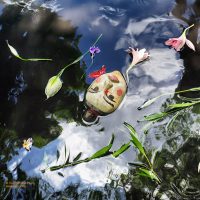Zen Garden in “Digital Arts and Design – International Conference and Exhibition”, Bangkok 2024
Gardens hold a significant place in various mythologies around the world, often symbolizing paradise, creation, and the divine. More then now then ever gardens provide a direct connection to nature, offering a peaceful escape from the hustle and bustle of daily life.
In Japanese mythology and Zen Buddhism, gardens are seen as places of meditation and reflection. They often symbolize the natural world in its most essential and abstract form. Early gardens were influenced by Chinese garden philosophy, particularly from the Song dynasty (960-1279), which emphasized the symbolic use of rocks.
The classical Zen gardens we know today were developed during the Muromachi period (1336-1573). This era saw the rise of Zen Buddhism in Japan, and gardens were designed to aid in meditation and reflect the principles of Zen philosophy.
Rocks and Stones: These are the main elements, symbolizing mountains or islands. They are carefully placed to create a sense of balance and harmony.
Gravel and Sand: Representing water, gravel or sand is meticulously raked into patterns that mimic the flow of water, such as waves or ripples.
The artwork Meta Zen Garden aims to envision the future evolution of its concepts, considering the current state of environmental degradation and the emergence of new materials in the form of data.
In her research paper “The Transformative Effects of Consuming Data – The Experiences of Digital Art and Beyond” at the International Conference and Exhibition – Digital Arts and Design – Bangkok 2024, Dr Bridget Tracy Tan, PhD, analyses this artwork in relation with the artworks of others artists ( Farizi’s internalised conversations, Nguyen Trinh Thi’s Soundless ) to address the “concern that we are losing touch with humanity and perhaps compromising on specific human traits when we engage in our correspondence with the world.”
” By conceiving of this Meta-Zen-Garden, Quang Lam has digitally reimagined the construction of consciousness to be made manifest as that in the sekitei. The data has been transformed into physical renderings that simulate meditative stimuli, exploring time and space, refining and attuning the senses toward the greater and ambient forces often underestimated by humans in the material world.”
To read her full essay please download the following pdf :
The following images of the Meta Zen Garden were done at Nanyang Academy of Fine Arts and Vin Gallery where another Meta Zen Garden was built




























